All about purple and lilac peonies
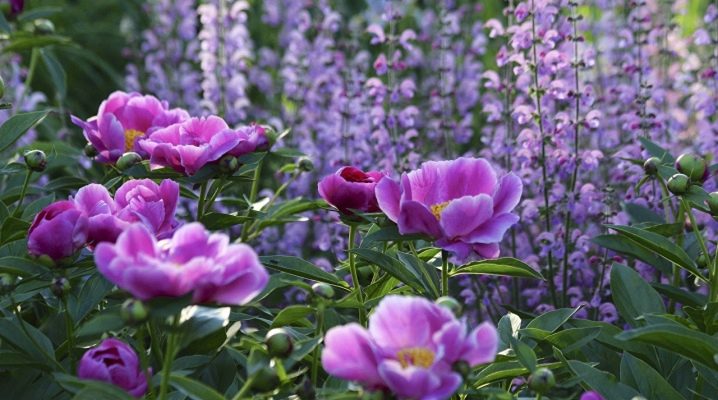
The peony flower blooms very luxuriantly, it is unpretentious to care for, and can also grow in one place for a long time. The plant can be distinguished by its colors: white, purple, lilac, burgundy. And there are also double and non-double varieties of peonies. In order for a peony to grow and please the eye, you should know what species and varieties can be planted in a certain area.
Varieties
All peonies can be divided into groups according to the shape of the bud, there are 5 such groups:
- non-double - flowers have only 10 petals, small buds;
- japanese - the stamens have a similar color to the petals, they can have different shades, from yellow to bright red, in some cases there are purple peonies, but they are rare here;
- anemone - the flower has 6 petals located along the edge of the bud;
- semi-double peonies - have a lush bud that is completely filled with petals;
- terry - the buds are fluffy, the petals are wider at the edges, and inside the small size, the stamens are practically not visible here.
Purple shades can be found in every variety of peonies. Usually they are presented in the form of shrubs, semi-shrubs, there are also herbaceous ones. Now many beautiful species have been bred and they look great.

The bushes of flowers grow to a height of more than 1 meter, the roots are large, bulbs are located on them. Several flowers can grow from one such bulb at once. Flowers on a peony can be of different colors - this is understandable, but the leaves also have different colors: green, gray and even purple. The peony blooms singly, and the size of one bud reaches more than 20 cm in diameter. At the same time, he will decorate not only a garden in the form of a shrub, but also a room with a bouquet in a vase. Purple peony varieties can be perfect for any occasion.
These plants are easy to maintain and easy to grow. During flowering, they are gorgeous. But this splendor will not disappear after the flowers fall off - after all, the lush bush itself looks beautiful.
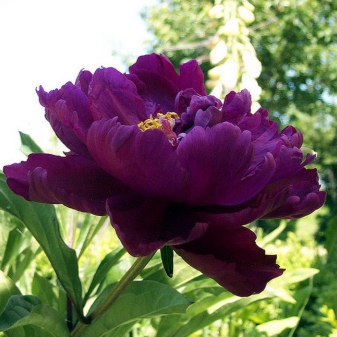
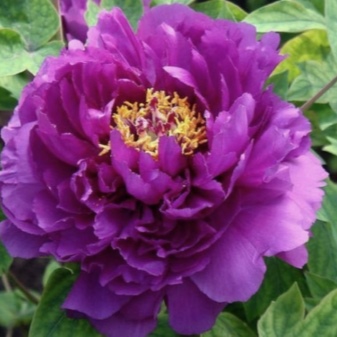
Description of varieties
As already mentioned, all peonies are divided into three large varieties: herbaceous, shrubs and dwarf shrubs.
The following varieties can be found in the herbaceous type of peonies.
- Bowl of Beauty. Flower size about 20 cm, Japanese type. The flower has a lilac-pink color, and in the center the petals have a light yellow tint.
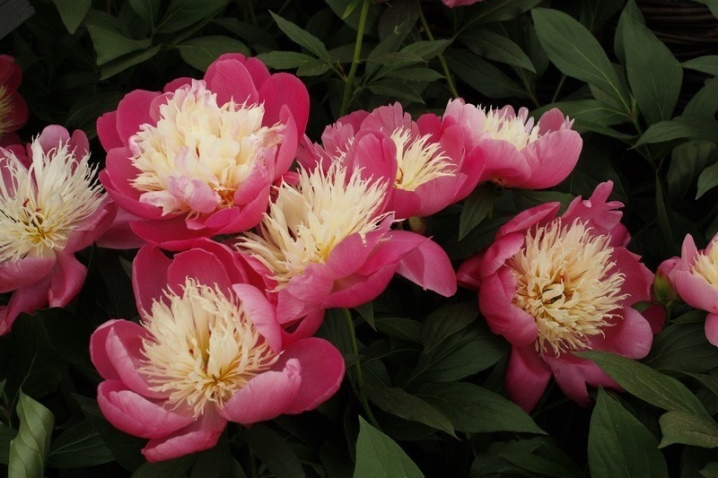
- "Anastasia". Terry flowers, look great. The variety is late and is more suitable for warm climates. Plant height reaches up to 1 meter in height. The inflorescence is a pleasant pink-lilac color, and a grayish tint is presented at the tips of the petals.
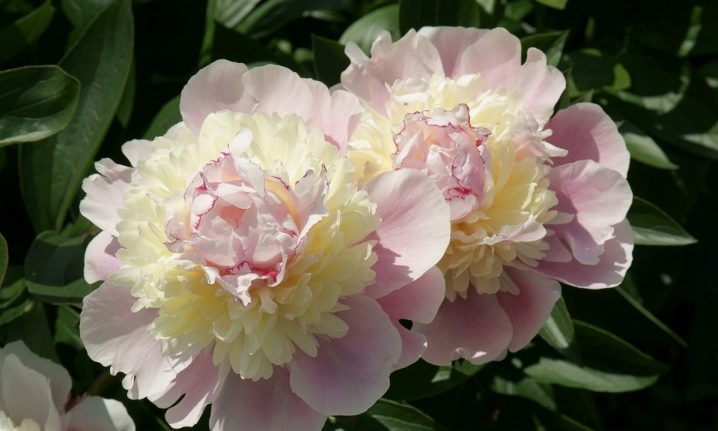
- "Alexandr Duma". The variety has bomb-shaped inflorescences, which are painted in a bright pink-lilac shade. The petal length is about 13 cm, this variety was bred in the 19th century. The flowering period of the peony is also late. The inflorescence has a sweet smell.
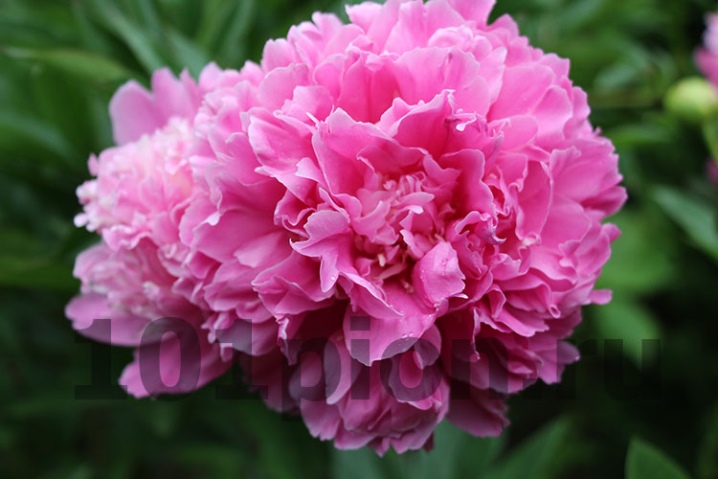
- Bellville. Inflorescences lilac-purple light color. The aroma of the flower is sweetish, flowering later.
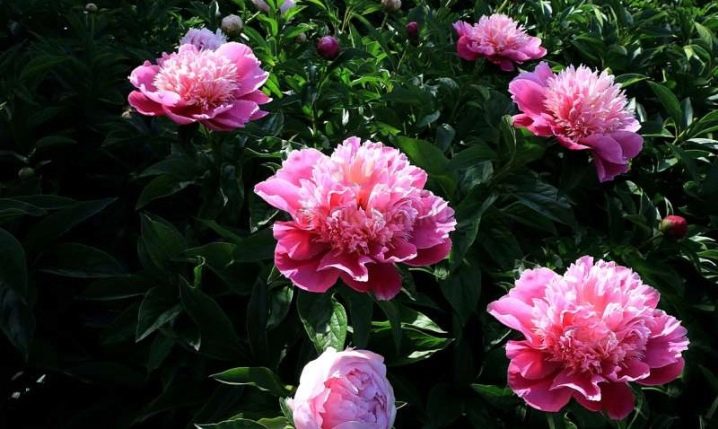
- "Purple Ocean". The flower represents the shape of a lilac crown. The variety is frost resistant, flowering period is about 3 weeks. The buds are 15 cm in diameter.
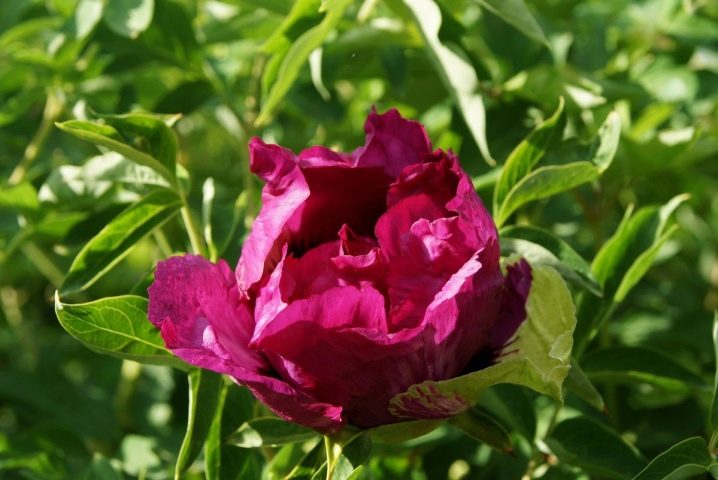
The semi-shrub peonies include hybrid varieties that are bred in Japan and China. The following varieties are very popular in Russia.
- "Purple Lotus". It is a semi-shrub type, large buds, 25 cm in diameter. The flower has a strong aroma, the first inflorescences resemble a lotus. The bush of the plant grows over 1 meter in height.

- Duck Black Ash. This variety of peonies is ancient, the petals reach up to 14 cm when opened.The inflorescences are purple-pink, the peony blooms early, so it is better to grow it in a temperate climate.
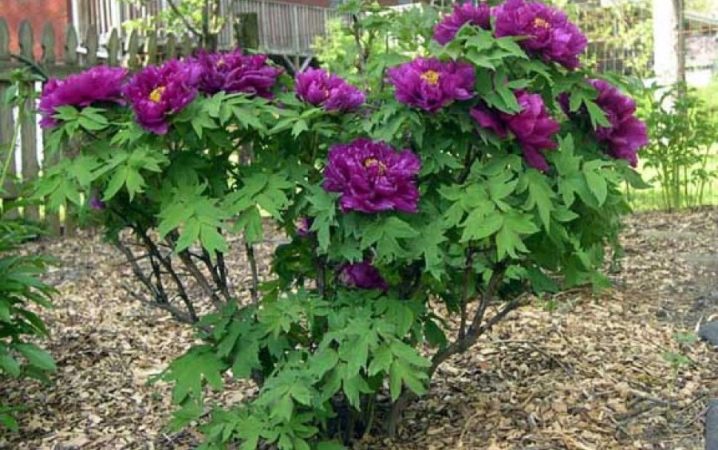
- "Sapphire". The flowering time is in June, the bud is up to 18 cm in size. The bush can grow up to 1.2 meters, up to 50 inflorescences bloom on it. Lilac petals.
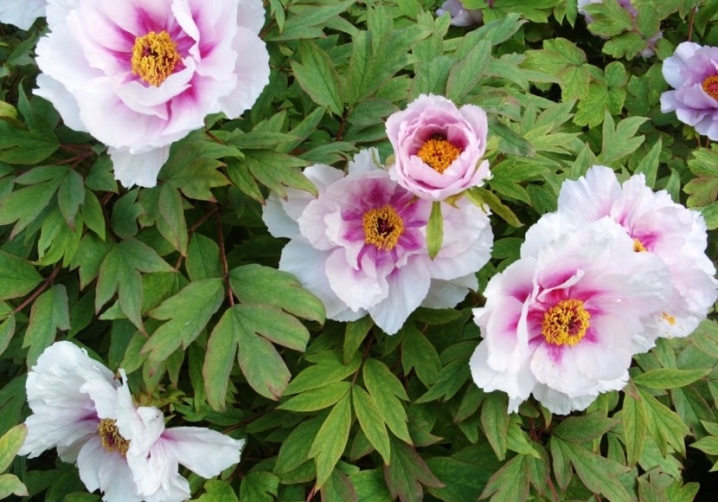
- "Purple Haze". Belongs to the subgroup of terry, the bushes are small in size - up to 90 cm.The petals are painted in a pink or lilac-pink hue. Only 2-3 flowers can bloom on the bush, the peony blooms early, flowering occurs within 2 weeks.
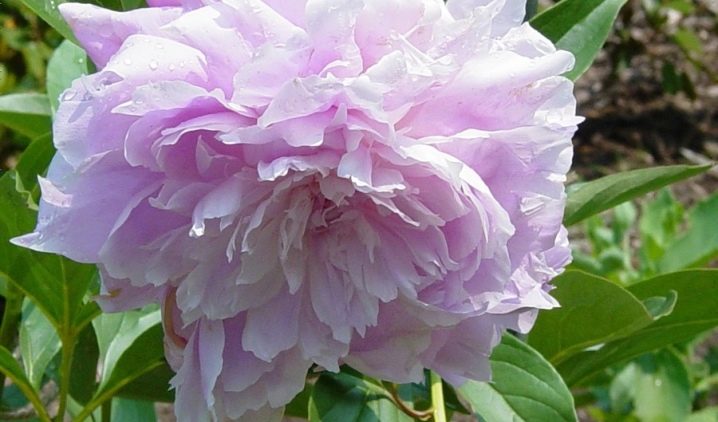
Care Tips
All types of lilac and purple shades of peonies can be planted side by side, and you can also create compositions from them by adding white buds.
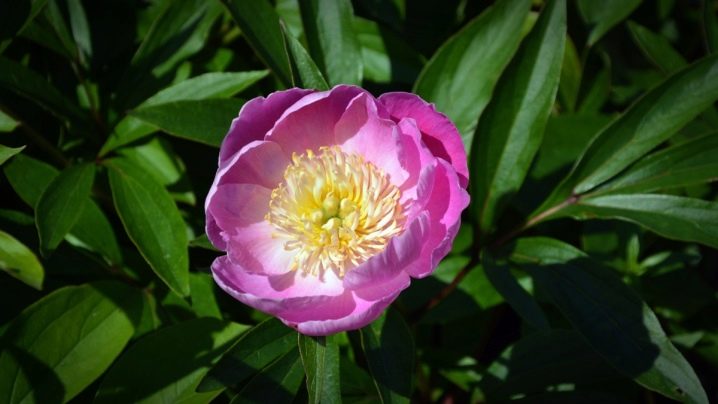
In order for the flowers on the bush to be more lush, they need feeding, and it must be done correctly. Usually, top dressing is carried out in the spring - for this, the ground near the flower is watered with a special solution. The solution contains water and potassium permanganate, one bucket may be enough for several peony bushes. When the flower has grown, it should be treated with ammonium nitrate dissolved in water. Such feeding should be carried out once a month, the dosage is chosen according to the instructions of the composition. These actions are usually carried out in the evening hours, when the sun has already set, so as not to damage the plant. When the buds begin to pour on the peony, as well as during the flowering period, it is necessary to make a special composition with ammonium nitrate, potassium salt and superphosphate. Around the peony bush, a hole is pulled out and the resulting fertilizer is poured into it, after which the hole is covered with earth.
After the flowering time has passed, the roots of the plant need abundant watering.


There are times when a plant planted in one place does not give buds - in this situation, it can be transplanted to a better place. If you need to propagate a plant bush, then it should be dug up and the roots should be divided into several parts. After that, you can plant the peony in another place. It is best if a flower is transplanted under the age of 4 years, which previously bears fruit more than 2 times. This is due to the fact that the older the peony, the thicker its rhizome, and there will be difficulties in separating. Plant transplant work is best carried out in the autumn. If you transplant peonies in the spring, then they begin to hurt a lot and practically do not develop. When transplanting flowers in the spring, it is worth doing this after the ground has thawed.


What to consider when choosing a variety of peonies:
- type - shrubs or herbaceous;
- shape and color of the bud;
- for what purposes - only for the season or as a perennial;
- pay attention to the vitality of the plant;
- plant size;
- which stems are erect or hanging.
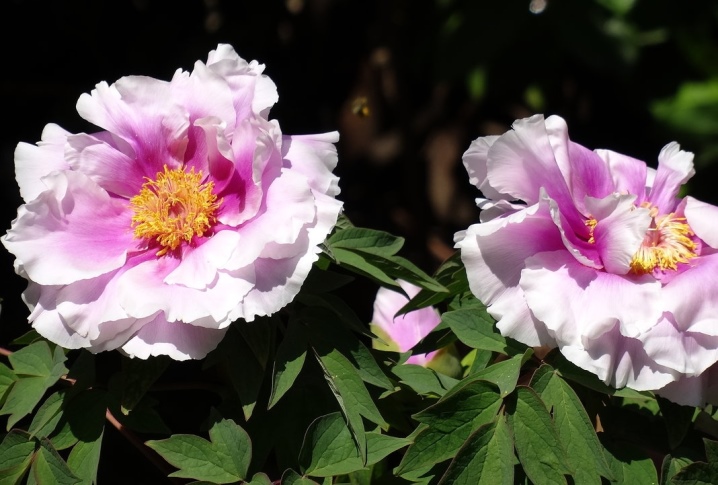
Do not forget about the peony flowering time. If you make the right selection and combine peonies, then they will bloom all summer. It must be remembered that shrub peonies will be the first to bloom. All this information can be found in the description of the peony variety:
- very early flowers;
- early buds;
- medium flowering;
- mid-late blooming;
- later and very late.
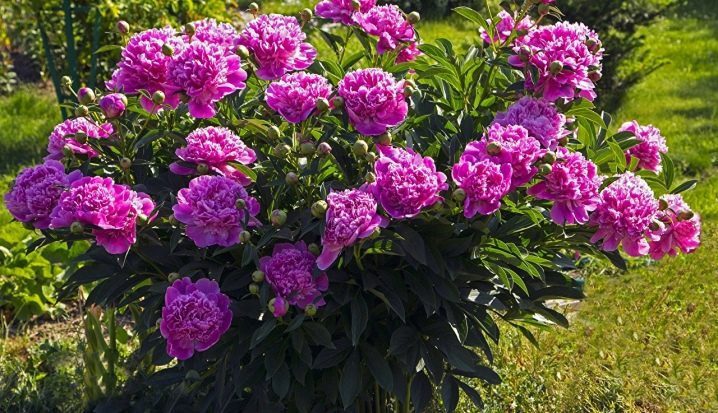
In herbaceous peonies, the stems extend directly from the roots - they will not harden, and in winter the entire ground part of the flower dies off.
The semi-shrubs have stems, woody only in the lower part, and at the top they are green, herbaceous, so only the herbaceous part dies off in winter. And in the spring, shoots from the woody part begin to grow.
In the shrub type, all the bushes are woody, so they do not die off for the winter.
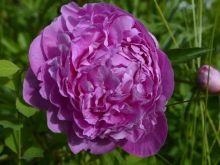
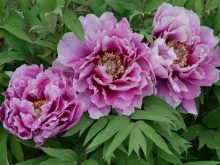

More recently, breeders have bred another variety of peonies - these are mini-peonies, they are most often planted in containers. In height, such peonies reach only 60 cm, and their flowers are anemone-shaped. There is practically no information about them, and yet some types of such peonies even have their own names.
More information about a separate type of lilac peony is in the next video.







































































































The comment was sent successfully.